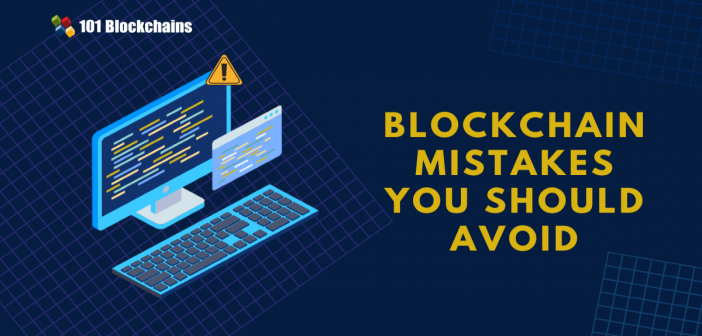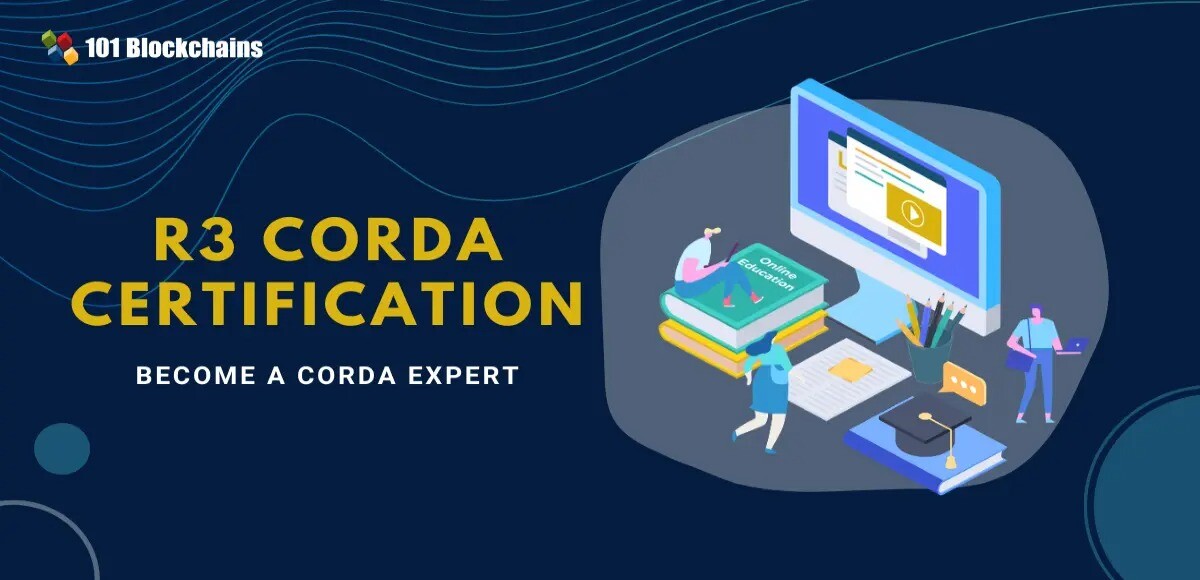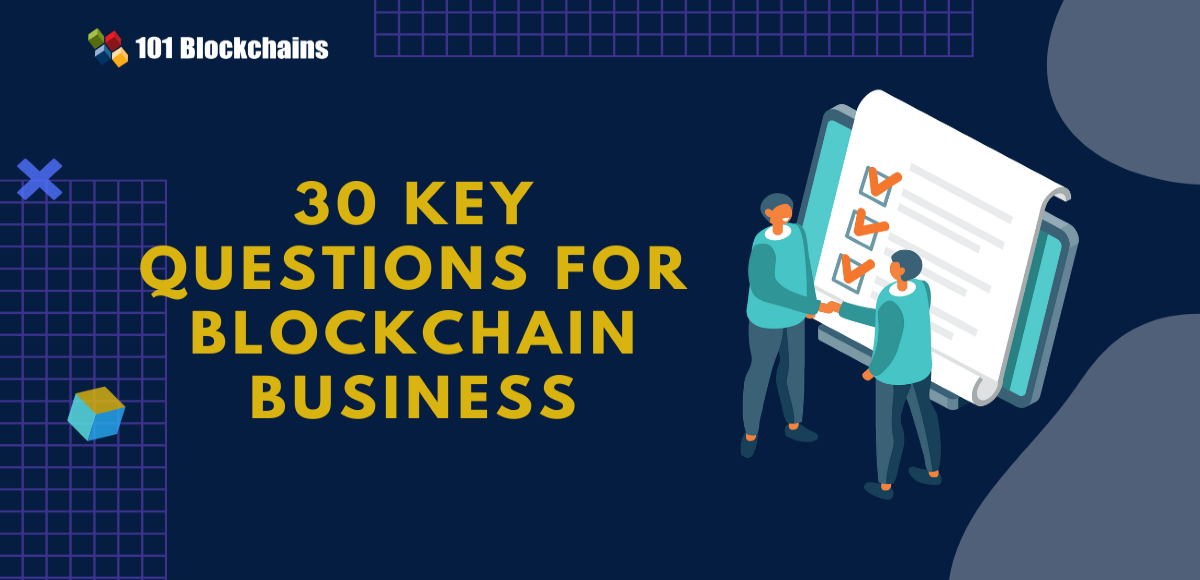Learn how blockchain truly works, master key definitions, and uncover what makes smart contracts so "smart." Dive into the fundamentals, gain valuable insights, and start your blockchain journey today!

- Opinions
Gwyneth Iredale
- on March 01, 2021
5 Common Blockchain Mistakes You Should Avoid
For the enterprises, it might not be possible to afford the mistakes that can ruin a project. So, as a Blockchain professional, you need to learn about blockchain mistakes and avoid them to bring the best outcomes.
The hype around blockchain technology is definitely real! Many blockchain enthusiasts openly claim the efficiency of blockchain functionalities such as improving transparency in governance processes, better supply chain operations, and the development of new cryptocurrencies. Proof-of-concept projects deployed across various industries clearly establish the dominance of blockchain.
Companies that are not undertaking the development of test projects are facing increased risks of losing their market advantage. Looking at all these things, we can surely understand that blockchain is everywhere! However, it is also important to reflect on the dark side of the blockchain ecosystem, i.e., blockchain mistakes.
The majority of blockchain projects in the present times are limited to prototypes with very minimal scope for implementation. Although the diverse assortment of blockchain projects can definitely present the blockchain ecosystem in a favorable light, many projects are presently transitioning to inactivity. The most alarming fact is that a mere 8% of the total blockchain projects in the ecosystem are functioning now.
Enroll Now: Free Enterprise Blockchains Fundamentals Course
Most Common Blockchain Mistakes People Make
There is no doubt regarding the continuously escalating interest in blockchain. However, market reality presents a completely different picture, with only 10% of companies claiming deployment or engaging in short-term plans for blockchain projects. Gartner points out that a major share of blockchain projects is never able to cross the initial experimentation stages. So, what is the most prominent reason that hinders the implementation of blockchain projects?
Well, the most reasonable and simplest answer to this question refers to the blockchain mistakes by developers. The general mistakes, which often escape the attention of developers and blockchain professionals, can mark the difference between successful and unsuccessful blockchain projects.
Many of the existing use cases of blockchain include trade finance, payments and transaction settlements, and land title systems. However, many blockchain projects lack the basic essence of blockchain technology due to the approach for their conception. The projects under development in the blockchain ecosystem are presently aiming at deploying a centralized business model by leveraging distributed or decentralized architecture. Such projects do not have adequate security, don’t use tokens, and don’t have distributed network resilience.
The primary focus of such projects is largely centered on centralized control over the network and related operations at the business and technology strata. So, enterprises that are aspiring for experiments with blockchain technology must comply with certain mandatory precedents. On the other hand, the success of blockchain projects depends a lot on the ability to identify blockchain mistakes. A closer overview of the common blockchain mistakes can support enterprises in avoiding them with a proactive approach.
Aspiring to become a Blockchain professional? Check out the best tips to start a Blockchain career by the experts.
1. Failure in Understanding or Using Blockchain Technology
With only 11% of CIOs claiming that they have deployed blockchain projects or have short-term plans for the same, the scope for awareness about blockchain technology seems very feeble.
According to a report by Gartner, many blockchain projects in use presently are focused on data recording on blockchain platforms.
The primary blockchain feature under focus for enterprises in such applications is decentralized ledger technology. However, enterprises and CIOs make one of the biggest blockchain mistakes by ignoring other crucial blockchain features. For example, smart contract capabilities, decentralized consensus, and tokenization barely find any applications in modern blockchain projects.
Organizations are not using the complete set of blockchain features, thereby rendering other features without any purpose. At this point in time, it is reasonable to ask whether enterprises actually need blockchain. Mr. Leow further elaborated that enterprises could opt for distributed ledger technology as their starting point in the blockchain.
However, CIOs should avoid common blockchain mistakes through clarification about the use cases for blockchain in their enterprises. CIOs should take a proactive stand in defining the blockchain use cases as a whole before moving into the projects. Clarity regarding the objectives of blockchain use cases enables seamless transition into projects that can leverage a wide range of blockchain functionalities. If you are not using it all, then why are you even using it?
The most important factor arising out of limited awareness of blockchain functionalities for different use cases is the confusion regarding protocols. Developers should note that the blockchain mistakes of the underuse of blockchain features arise due to lack of clarity. Blockchain is capable of addressing the requirements of various industries and related applications such as medical information systems and supply chain management. However, CIOs fail to understand that blockchain is actually a protocol that enables different functionalities.
Mr. Leow stated, “No one would assume that a protocol is a foundation for a social network or a complete eCommerce system.”
Generally, people assume that blockchain is just like a comprehensive application solution that lets them develop solutions according to requirements. However, the use of blockchain should follow a completely opposite perspective. Developers should focus on using blockchain as a protocol for integrating required functionalities in an application solution. Therefore, avoiding the blockchain mistakes of undermining the functionalities of blockchain and faulty approaches for understanding blockchain implementation can enhance the chances for success of blockchain projects.
Learn more about Blockchain Technology with the detailed Blockchain Fundamentals Presentation.
2. Overestimating the Readiness of Existing Technology for Production
The blockchain market includes a wide range of offerings spread across various domains and applications. Many of the products in the existing blockchain landscape overlap in terms of functionalities, while some of them complement each other. Various blockchain projects are being developed under the leadership of small startups with venture funding.
Another major share of blockchain projects is open-source blockchain projects empowered by communities, without directed control of a single, centralized vendor. The confusing assortment of blockchain offerings on the existing market can be the source of one of the blockchain mistakes. The differentiation between the different blockchain platforms in different ways, including universal computing and high-level smart contract languages with better familiarity, can result in the failure of many blockchain projects.
The report by Gartner on the most prominent blockchain mistakes by enterprises reflects on the dire consequences of the existing blockchain scenario. The report indicates that most of the existing blockchain solutions would lack maturity for approaching production work for one year. So, what can leaders and blockchain professionals do to deal with this issue?
The solution to such blockchain mistakes starts with the definition of timelines for different project stages. Once you have settled in for a timeline, you need to establish the progression of tasks. Recommended practices suggest moving from simple functionalities with narrow scope towards complex solutions with a broader scope.
Subsequently, it is also important to maintain the timeline’s progress with the arrival of new blockchain functionalities. The emerging capabilities of blockchain technologies can ensure the relevance of the blockchain platforms for production work. As a result, enterprises can ensure highly functional blockchain platforms for their business goals.
New to the Blockchain world? Here’s how you need to learn Blockchain to get ahead in your career.
3. Blockchain is Not Just a Storage Mechanism
The applications of blockchain for secure information exchange and storing records in blocks create the source for blockchain mistakes. CIOs are generally confused about the difference between blockchain and distributed database management systems or DBMSs. As a result, blockchain deployments can result in the lack of alignment of enterprise blockchain projects. The existing blockchain platforms could not provide support for complex data models.
In addition, the blockchain platforms do not offer assurance for high throughput or low latency. However, these features are clearly evident in modern and distributed DBMSs. The basic design trade-off for creating blockchain platforms focused on recognition of the restrictions on data management capabilities. Blockchain platforms were tailored for providing an immutable, trusted, and authoritative record of events among a dynamic assortment of unrelated parties.
Blockchain technology does not focus on the complete “create, read, update, delete” model. This is the point of difference between blockchain and traditional database management technology. On the other hand, blockchain supports only the ‘create’ and ‘read’ model for database management.
Mr. Leow stated, “CIOs should have a keen eye for the data management needs in their blockchain project”. The recommended practice to avoid blockchain mistakes of considering the technology as a superior alternative to traditional database management solutions is the choice of conventional data management solutions in certain cases.
As a Blockchain novice, you must go through the most common Blockchain terms and definitions to learn them better. Here are the top Blockchain definitions you need to check.
4. Inadequate Investment of Resources
Undermining the lack of resources is also one of the prominent blockchain mistakes that can cost heavily. Various blockchain professionals have doubts regarding the areas in which they have to invest their resources. At the same time, lack of clarity regarding the resources of knowledge, time, and money also serve as major roadblocks. Enterprises should look at investing a considerable amount of time in discovering and bringing real business professionals into a blockchain team.
One of the foremost confusions regarding the requirement of resources for blockchain projects is programming skills. Many common assumptions state that blockchain projects focus only on blockchain-specific programming skills. However, the blockchain-specific programming accounts only for 10% of the total amount of code scripted for blockchain solutions. Blockchain development teams must also have fluency in a comprehensive, general programming skillset. In addition, developers must also have an in-depth understanding of scripting software with capabilities for interaction with a blockchain network.
At the same time, enterprises should also note the common blockchain mistakes of failing to compensate for lack of resources. For example, if you don’t have the skills for marketing a planned blockchain solution to prospective investors, then bring in marketing expertise into the team. On the other hand, roadblocks in the development project could easily find solutions through the recommendations and advice of professionals.
However, the majority of blockchain professionals are currently turning towards false experts on different online sources, thereby resulting in disastrous failures. Therefore, the lack of a promising infrastructure for delivering practical blockchain knowledge with the assurance of quality results in blockchain mistakes.
Similarly, failure in planning the sources for funding blockchain projects is also one of the common blockchain mistakes. Every blockchain project would have contributors who wouldn’t like to engage in the technicalities of blockchain development. However, blockchain projects should establish the difference between technical and non-technical contributors for efficient management of resources.
Want to get a certification to boost your career? Check out the best blockchain certifications where you can get training from the best market experts.
5. Governance Issues
Many new blockchain projects do not focus on managing governance issues. Considered as one of the most common blockchain mistakes, issues with Blockchain governance are primarily dominant in public blockchains. According to Mr. Leow, “Governance in the case of public blockchains such as Bitcoin and Ethereum are largely focused on technical issues.”
This is where CIOs should notice the source of one of the biggest blockchain mistakes for public blockchain solutions. The lack of focus on technical issues does not leave room for emphasizing human motivation or behaviors in blockchain solutions. CIOs should develop awareness regarding threats of blockchain governance issues for their blockchain projects.
Most important of all, larger organizations in the blockchain ecosystem should attempt the development of groups for establishing governance models. The collective consensus among large enterprises can support the credibility of the governance models, thereby providing an effective solution.
If you’re preparing for a Blockchain interview, you should go through this set of 50 most common Blockchain interview questions to prepare well and crack the interview.
Bottom Line
Therefore, it is clear that companies engaged in blockchain projects have a lot more to cover than the novelty of blockchain. New features are arriving every day on the blockchain landscape, and enterprises are looking for innovative solutions. At the same time, misconceptions regarding the identity of blockchain also result in various pitfalls for blockchain projects. A look at the numbers about blockchain adoption and implementation across different sectors definitely paints a positive picture. However, it is important to steer beyond the mirage of blockchain hype and discover new avenues to capitalize on it.
Challenges are undoubtedly the foremost ingredient in driving the success of enterprise projects. So, leaders should take a formidable stand against the most common blockchain mistakes, as mentioned here. Furthermore, the extended focus on resource allocation to blockchain professionals with significant Blockchain skills can also bring huge differences.
Understanding blockchain technology thoroughly is a dominant aspect for ensuring the success of blockchain projects. If you want your blockchain project to achieve the desired outcomes, then look forward and keep track of the mistakes. With the constantly rising demand for decentralization and digital transformation, it is difficult to afford mistakes that can ruin projects!


![Future of Blockchain: Predictions for 2022 [UPDATED] future of blockchain predictions](https://101blockchains.com/wp-content/uploads/2020/12/future-of-blockchain-predictions.png)

